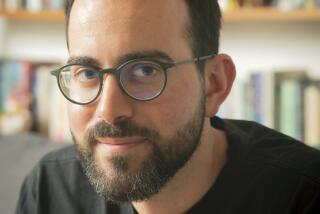Exploring science and its pleasures
- Share via
There is no better gift for a young, aspiring scientist than this little book of 11 essays. Nor, for that matter, for any nonscientist who wants to know what it feels like to be a scientist.
An adjunct professor of the humanities at MIT, Alan Lightman is a successful physicist who also has become a successful writer of novels, including “Einstein’s Dreams” and “The Diagnosis.” In his “A Sense of the Mysterious,” young scientists will find the excitement of understanding and contemplating what Lightman calls “the beauty and logic of the natural world.”
Lightman draws the book title, which is also the title of an essay, from Einstein, who wrote in 1931 that “the most beautiful experience we can have is the mysterious. It is the fundamental emotion which stands at the cradle of true art and true science.” Einstein meant not that “science is full of unpredictable or unknowable or supernatural forces,” Lightman writes, but that one has “a sense of awe, a sense that there are things larger than us, that we do not have all the answers at this moment. A sense that we can stand right at the edge between known and unknown and gaze into that cavern and be exhilarated rather than frightened.”
With the clarity of thought demanded by science, Lightman writes in these essays of the pleasures of physics and fiction, of their similarities and differences. The “creative moment,” Lightman writes, is the same in each; the differences can easily be imagined. For instance, he points out, in scientific writing it is useful to begin each paragraph with a topic sentence, whereas in fiction, a topic sentence is “usually fatal” because you want your reader to feel what you are saying, to be emotionally part of the scene you are creating.
Lightman recounts in these pages how, by the age of 42, he had withdrawn completely from scientific research to concentrate on fiction. He had had some success in “unraveling a mystery no one has ever understood before,” but he concluded that his work, like that of most physicists, was “respectable but not brilliant.” So he left science, explaining in the essay “A Scientist Dying Young” that “it is the creative element of my profession, not the exposition or the administration, that sets me on fire.”
Lightman also uses the creative eye and instincts of a novelist to sketch portraits of scientists he has known and observed. His mentor at Caltech, the unconventional and brilliant astrophysicist Kip Thorne, is nicely limned. So is the late Caltech physicist Richard Feynman, everybody’s favorite, whom Lightman calls the Michael Jordan of physics. In “Megaton Man,” he draws as fine and just a portrait of the late physicist Edward Teller as has been briefly done by others. And in “Dark Matter,” Lightman tells the story of astronomer Vera Rubin and questions, and laments, the relative absence of women from the top ranks of science.
“A Sense of the Mysterious” is a fine introduction to the excitement and pleasures of science by a scientist who is a humanist in the noblest sense of the word. *
More to Read
Sign up for our Book Club newsletter
Get the latest news, events and more from the Los Angeles Times Book Club, and help us get L.A. reading and talking.
You may occasionally receive promotional content from the Los Angeles Times.










